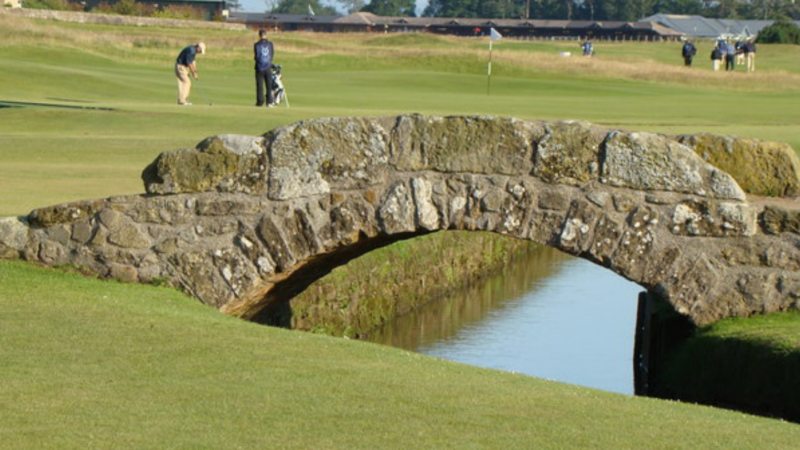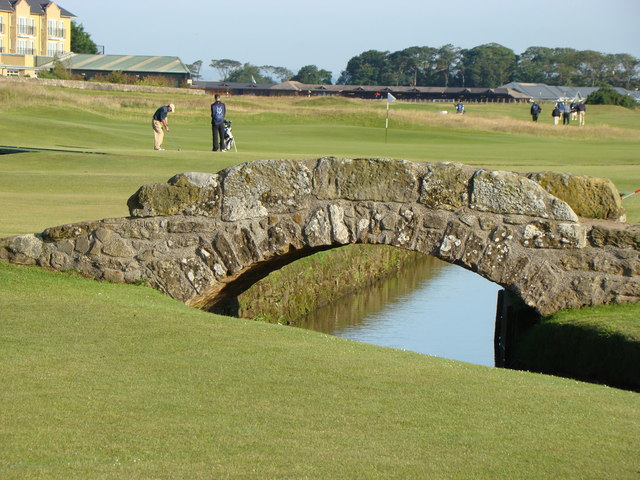
Who Or What Is The Swilcan Bridge at The Old Course at St. Andrews Named After?

With the Open Championship (or what some Americans call The British Open) just around the corner at the famed St. Andrews Links Golf Course in Scotland, questions come up regarding the backstory of some of the key features on that historic track. One of those is the famed Swilcan Bridge. How did it get its name?
First of all, a little bit about the bridge: The bridge spans the Swilcan Burn between the first and eighteenth fairways on the Old Course, and has become an important image in the sport of golf. The bridge had previously been known as the Golfers’ Bridge and had been known as this for hundreds of years previously. It’s estimated to be 700-800 years old, but no one really knows for sure.
The bridge itself is extremely small; at its farthest extent it measures about 30 feet long, eight feet wide and six feet tall, in the style of a simple Roman arch. Originally built to help shepherds get livestock across, it has the modern photographic advantage of great backdrops on three sides: the course’s grand Royal and Ancient Clubhouse and Hamilton Grand on one, often a packed grandstand of enthusiasts on another, and rolling hills facing toward the North Sea, on the last.
It is customary for champions of golf to publicly show some sort of homage or respect to the structure. Often, great PGA Tour champions playing their last competitive round at St. Andrews will pose on the bridge for photographs.
Here in the United States, on the second floor of the World Golf Hall of Fame museum in St. Augustine, Florida, there is a life-size stone replica of the Swilcan Bridge, accompanied with a floor-to-ceiling photograph of the Royal & Ancient clubhouse and Hamilton Hall in the background.
But how did it get its name and who might it be named after?
Well, it’s not necessarily a who, but a what. And it hasn’t even been named Swilcan over its entire history.
The name of the burn which runs across the first and last fairway of the Old Course shows considerable variation over its years. Given that the bulk of forms contain c/k, it is probable that the OSA form Swilian is a transcription error for Swilcan. The name may derive from an otherwise unrecorded Welsh term meaning ‘whirlpool, abyss in the sea’, which comes from a root meaning ‘to swallow’. That in itself is fairly humorous as it’s very accurate to what the burn did (and still does) to golf balls.

